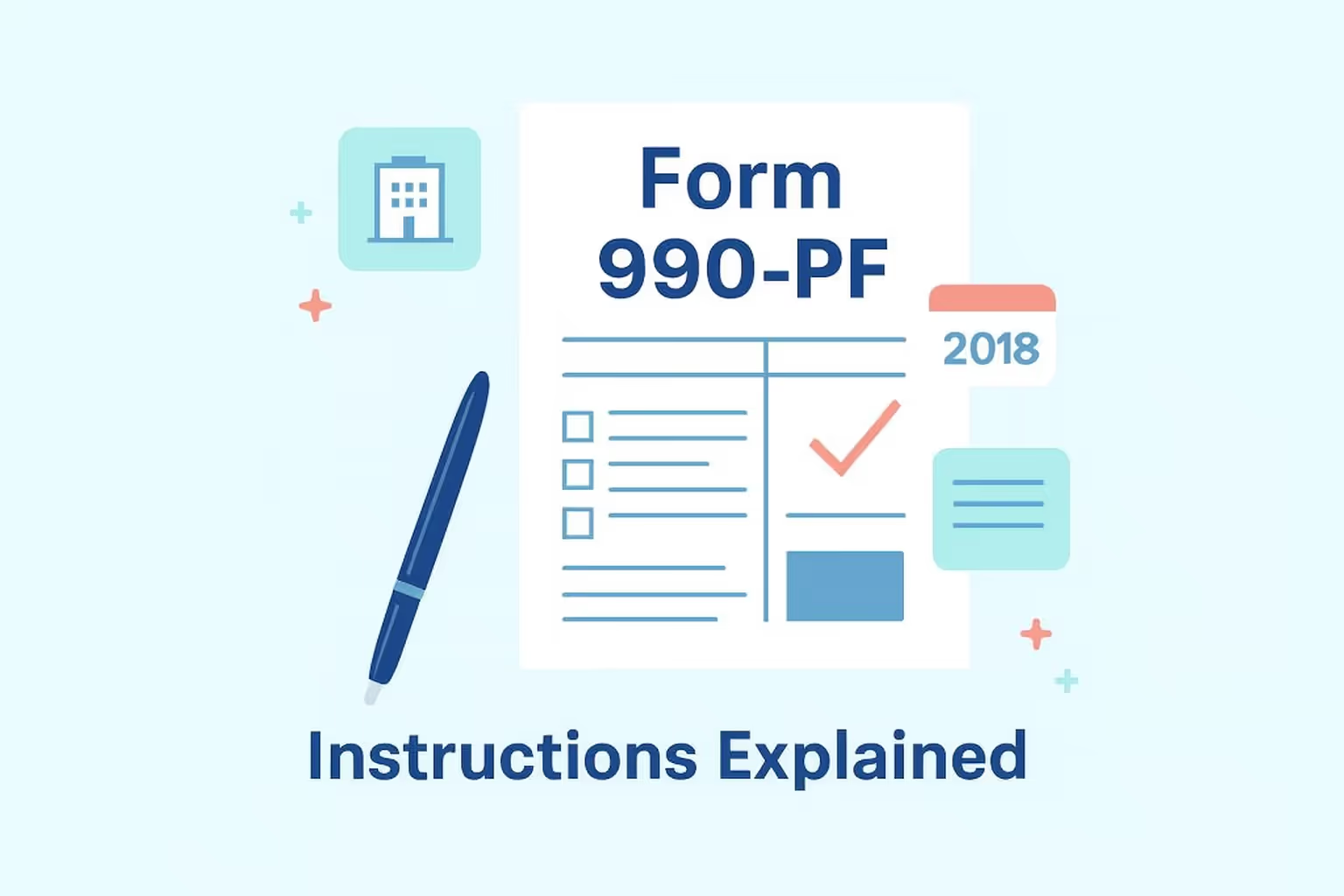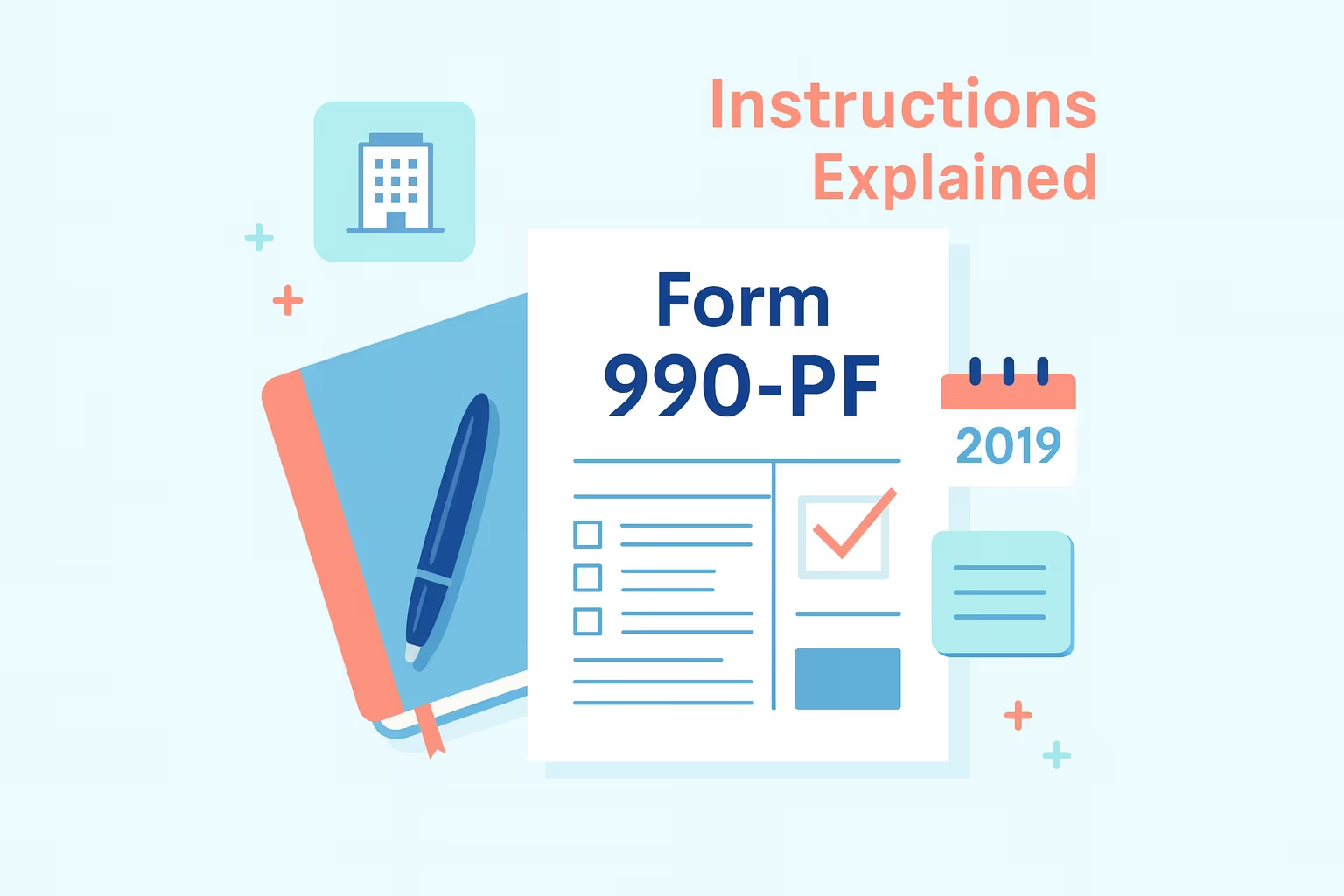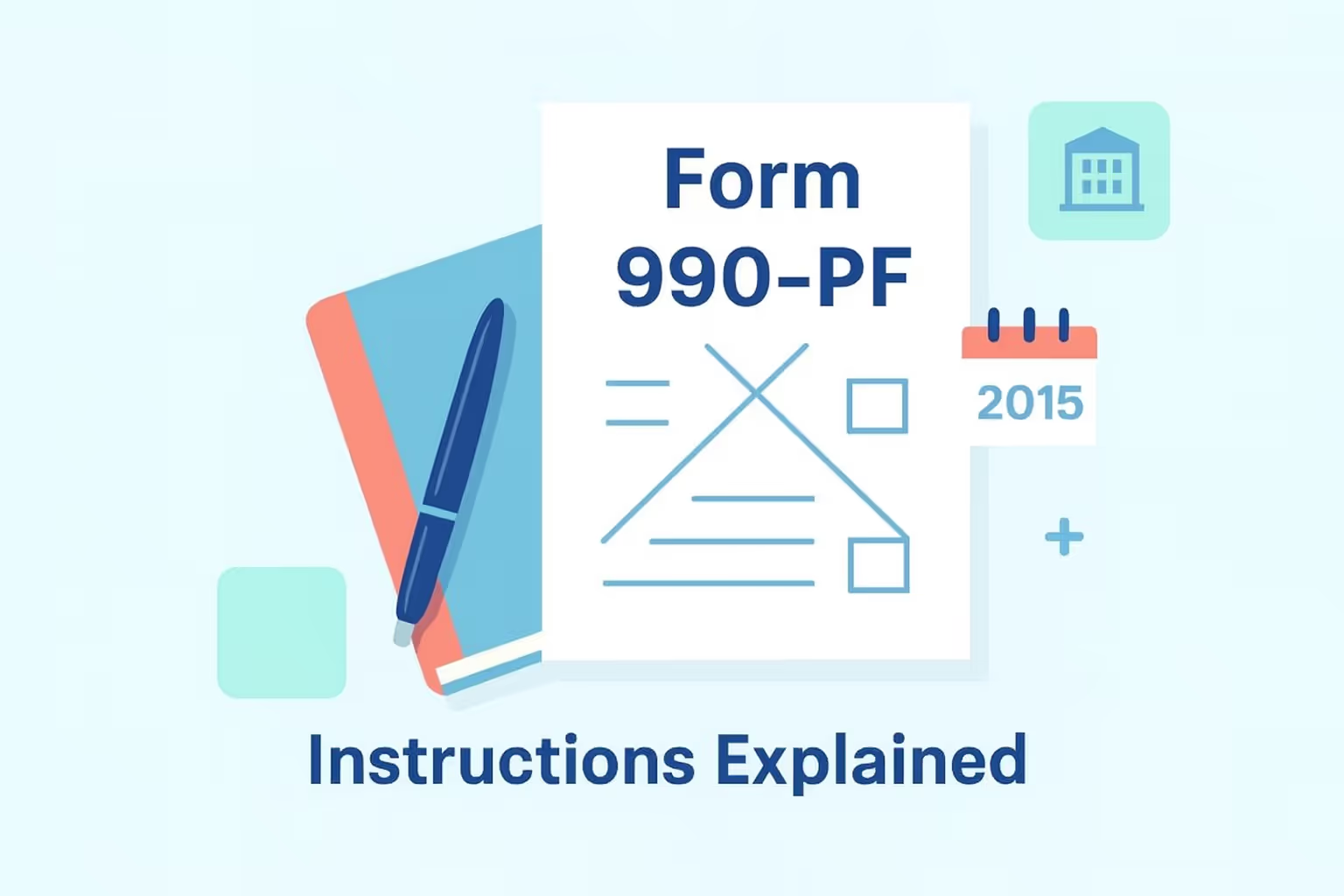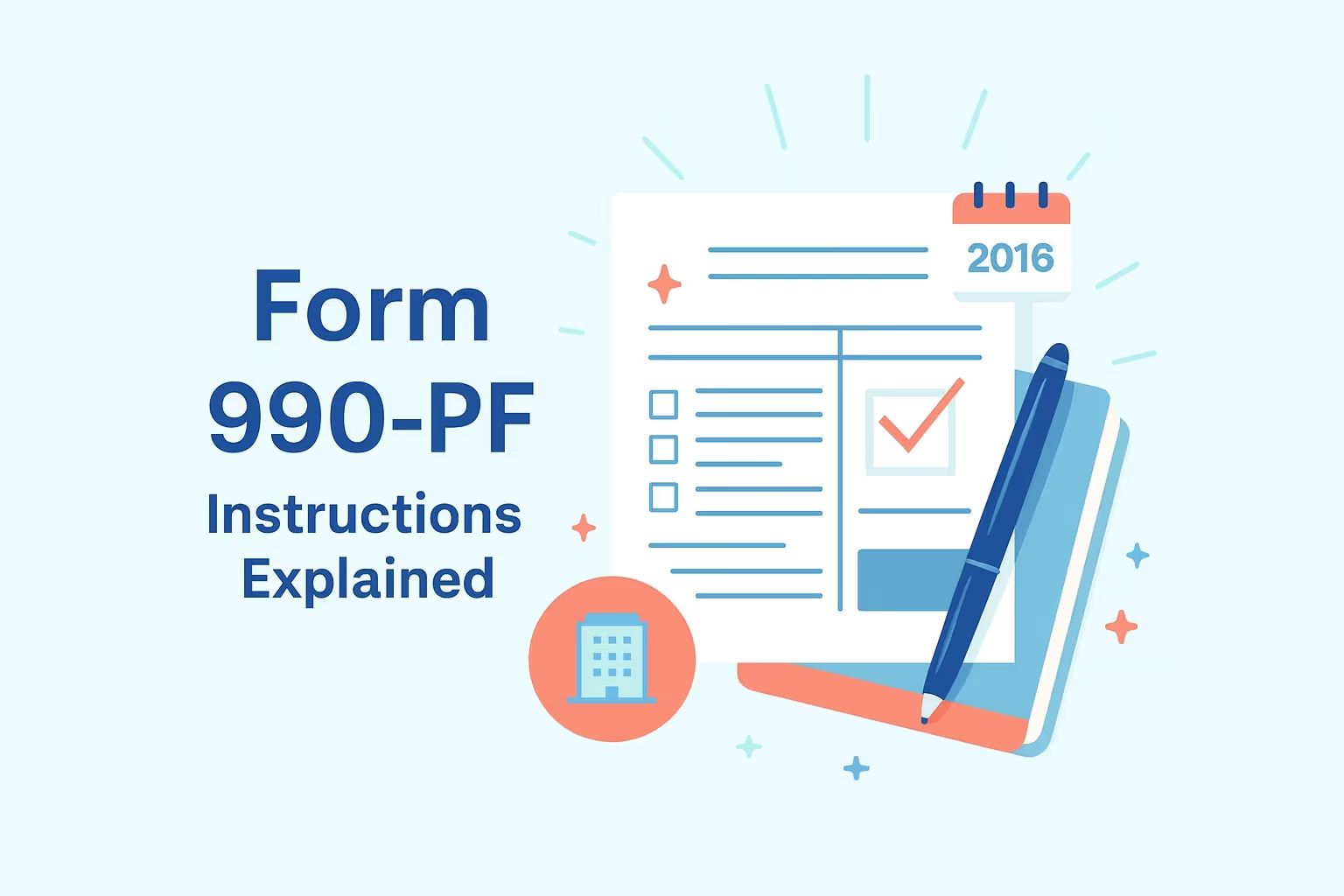IRS Form 990-PF (2018): Return of Private Foundation

What IRS Form 990-PF (2018) Is For
Every private foundation and each nonexempt charitable trust treated as a foundation must file Form 990-PF, the annual information return, for the tax year. It reports net investment income, investment income, philanthropic distributions, administrative expenses, fund balance activity, and excise tax obligations. It also verifies tax-exempt status or taxable private foundation status under federal income tax rules. Filing helps keep tax-exempt organizations transparent about their finances and allows the Internal Revenue Service to verify their compliance.
When You’d Use Form 990-PF for 2018
A foundation uses this form when reporting all financial activity for the tax year beginning in 2018, including capital gains, adjusted net income, unrelated business income, and tax-exempt interest. Late filing occurs when original deadlines are missed or when taxes remain unpaid. An amended filing occurs when private foundations, nonexempt charitable trusts, or exempt private foundations must correct their gross income figures, report income properly, revise their net assets, or adjust their philanthropic distributions. Submitting accurate figures helps maintain private foundation status and prevents future issues with income taxes.
Key Rules or Details for 2018
- Excise tax calculation: The excise tax, based on net investment income, used a two percent rate unless the foundation met distribution requirements, allowing a reduced one percent rate. Ensuring accuracy prevented additional tax liability.
- Foreign income reporting: A foreign foundation or domestic filer with a presence in a foreign country reported financial instruments, mutual funds, and foreign bank accounts. This ensured investment income was correctly considered net investment income.
- Compensation rules: Certain personal benefit contracts and any excess parachute payment trigger excise tax reporting duties. Reviewing agreements prevented violations of regulations regarding prohibited tax shelters.
- Distribution requirements: Foundations met the minimum investment return by distributing at least five percent of average net assets. Proper calculations reduced the risk of undistributed income carrying over into later years.
- Late Filing Penalties: Penalties are applied if the unpaid tax remains or if the filing is incomplete. Reviewing related expenses, administrative expenses, and tax-based entries reduced penalties.
Browse more tax form instructions and filing guides in our Forms Hub.
Step-by-Step (High Level)
Step 1: Gather financial documentation
Collect investment income reports, financial accounts, rental income, unemployment compensation, tax-exempt interest, and mutual fund information. Include program-related investments and all records showing charitable purposes. These materials ensure that adjusted gross income, modified adjusted gross income, and capital gain net income are reported accurately and consistently.
Step 2: Confirm the correct 2018 form version
Use the actual 2018 Form 990-PF instead of a later updated version to avoid mismatched line numbers. This prevents confusion involving net income, Medicare taxes, mortgage interest reporting, and gross receipts. Filing the correct version also improves Internal Revenue Service processing times.
Step 3: Calculate excise taxes and net investment income
Enter investment income, capital gains, unrelated business income, rental income, and foreign income to determine net investment income. Confirm that each amount is considered net investment income before calculating the net investment income tax. Accurate entries help ensure tax liability is correct and prevent amended filings.
Step 4: Report charitable distributions and required payouts
Document every charitable distribution supporting the foundation’s charitable purposes. Confirm that minimum investment return requirements are met using fund balances, net assets, and related expenses. Attach explanations when a foundation was formerly a public charity or when it made program-related investments that needed clarification.
Step 5: File the return and maintain compliance
Submit the return electronically if required or mail it to the Internal Revenue Service when permitted. Mark the amended return box when correcting earlier filings. Retain all statements, tax-paid documentation, unpaid tax records, administrative expenses worksheets, and professional fee invoices to support compliance for the private operating foundation or taxable private foundation.
Learn more about federal tax filing through our IRS Form Help Center.
Common Mistakes and How to Avoid Them
- Incorrect net investment income figures: Some filers misclassify foreign income or mutual funds. Reviewing gross income sources and investment accounts ensures each amount is properly treated and reduces the risk of inaccurate excise tax-based entries.
- Distribution miscalculations: Many foundations misapply minimum investment return rules. Verifying net assets and fund balance details prevents undistributed income and supports accurate payout reporting.
- Missing charitable distribution details: Some filers fail to explain program-related investments fully. Preparing clear descriptions early avoids IRS follow-up and strengthens support for philanthropic purposes.
- Compensation reporting errors: Certain personal benefit contracts sometimes get overlooked. Reviewing all agreements ensures excise tax liability remains accurate and avoids unnecessary penalties.
- Incomplete entries: Blank fields lead to processing delays. Entering zero or “N/A” where appropriate prevents follow-up notices and maintains a complete return.
Learn more about how to avoid business tax problems in our guide on How to File and Avoid Penalties.
What Happens After You File
Once the form is filed, the Internal Revenue Service reviews the income tax details, including entries for the net investment income tax, charitable distributions, and administrative expenses, to confirm accuracy. Any discrepancy involving tax payments, tax-based figures, or net income may result in notices requesting clarification. Foundations should monitor correspondence, maintain documentation showing the dates tax was paid, and promptly address any questions. Filed forms become public records, supporting transparency for tax-exempt organizations across each taxable year.
FAQs
How does IRS Form 990-PF 2018 reporting affect net assets, administrative expenses, and net income?
Reporting these items helps the IRS assess financial changes, confirm fund balances, and review how administrative expenses relate to the foundation’s activities. Accurate entries support compliance and prevent tax-based errors.
Why must Form 990-PF filers track estimated tax, undistributed income, and rental income during the taxable year?
These items affect excise tax calculations and distribution requirements. Tracking them helps prevent undistributed income penalties and ensures rental income and estimated tax amounts remain accurate.
How do private foundations calculate excise tax-based figures tied to minimum investment return and adjusted net income?
They compare average net assets with required payout percentages. Proper calculations safeguard compliance and reduce risks tied to incorrect minimum investment return entries.
Why must net assets, exempt status, and administrative expenses be documented for a private foundation or section 4947 entity?
These details help the IRS confirm exempt status, review spending patterns, and ensure administrative expenses remain reasonable. Accurate records help demonstrate appropriate stewardship.
How does rental income influence excise tax-based reporting and net income calculations?
Rental income affects both gross income totals and excise tax obligations. Reporting it accurately ensures that net income calculations are correct and prevents the need for amended filings.
How does net income determine minimum investment return requirements for private foundations?
Net income helps measure resources available for charitable purposes. Reliable reporting ensures the foundation meets distribution rules tied to minimum investment return.
How does exempt status affect tax-based reporting for administrative expenses within foreign foundations?
Exempt status influences how expenses are reviewed and categorized. Foreign foundations must document administrative expenses to avoid questions about international financial activity.
For more resources on filing or understanding prior-year IRS forms, visit our guide on Nonprofit & Exempt Organization Forms.



























